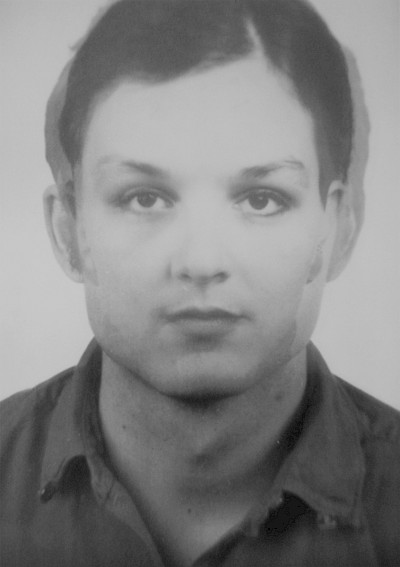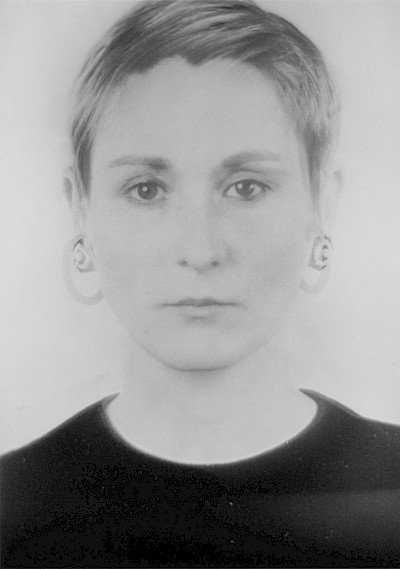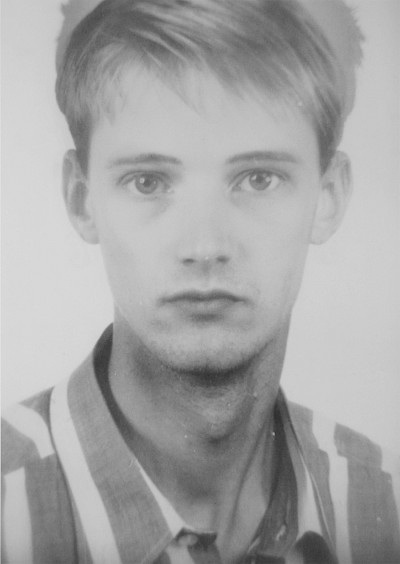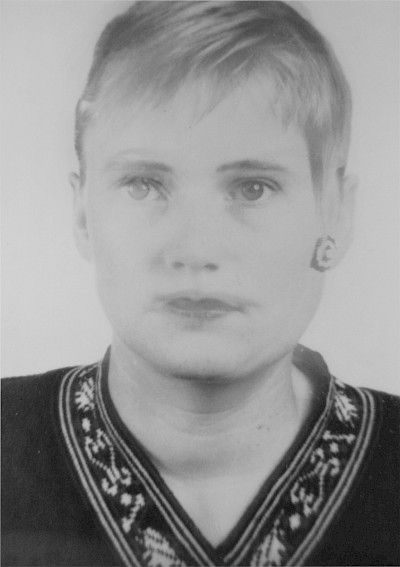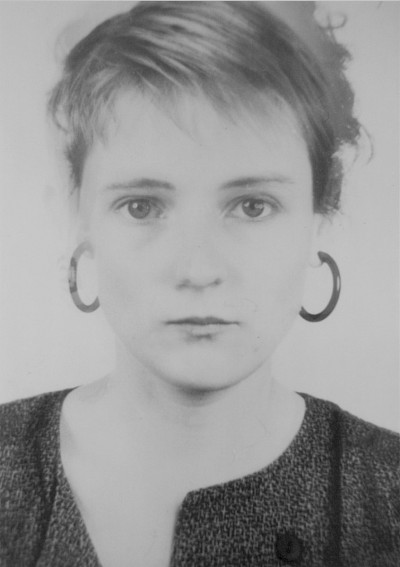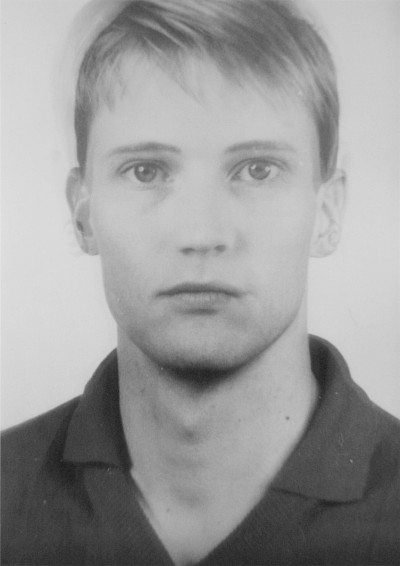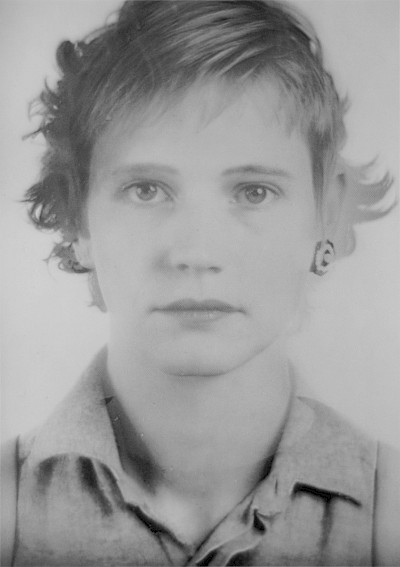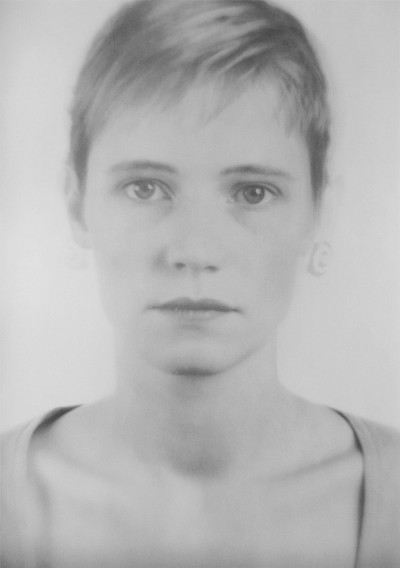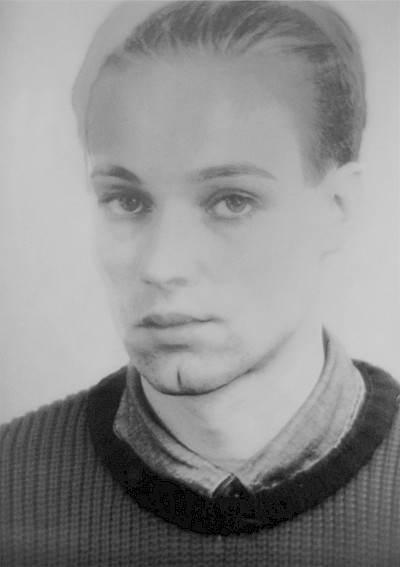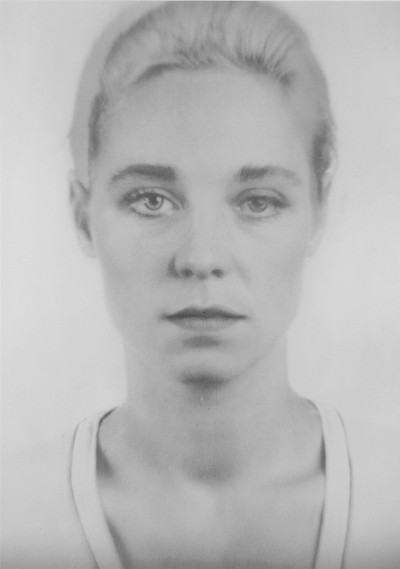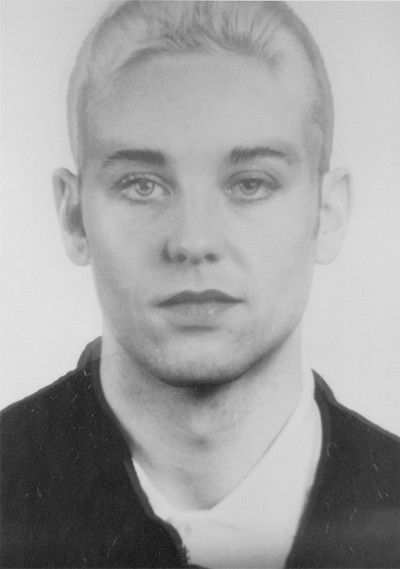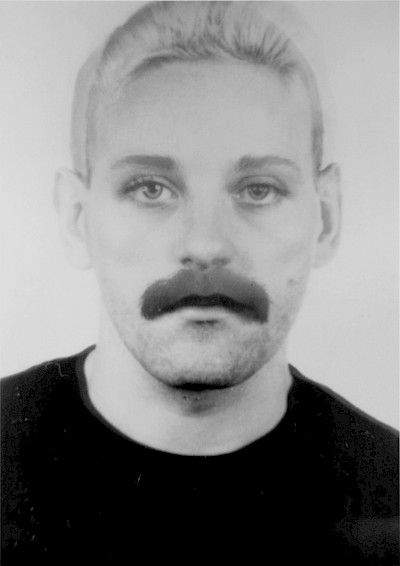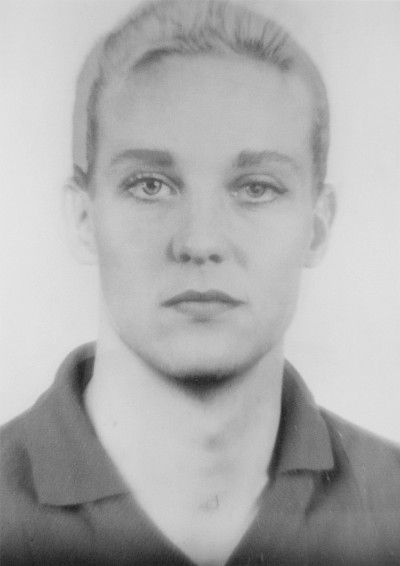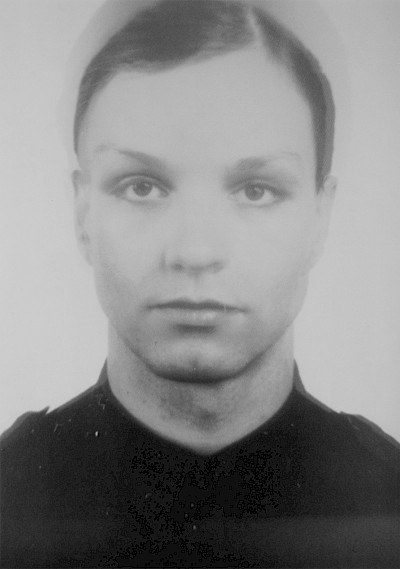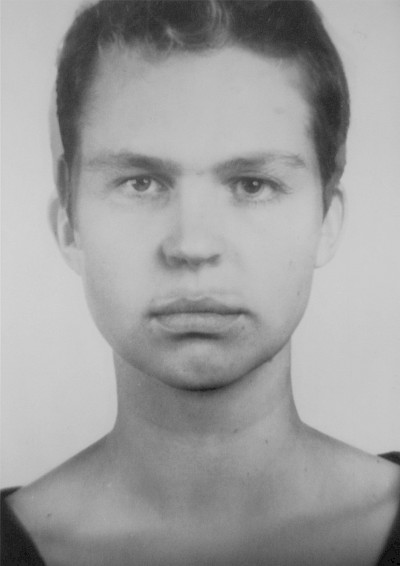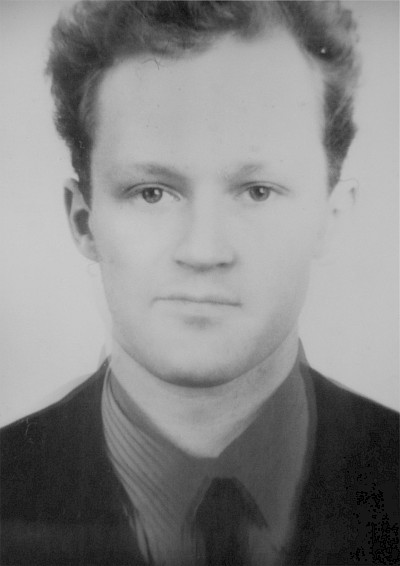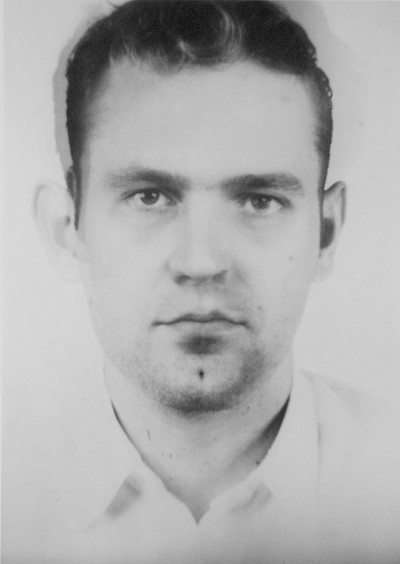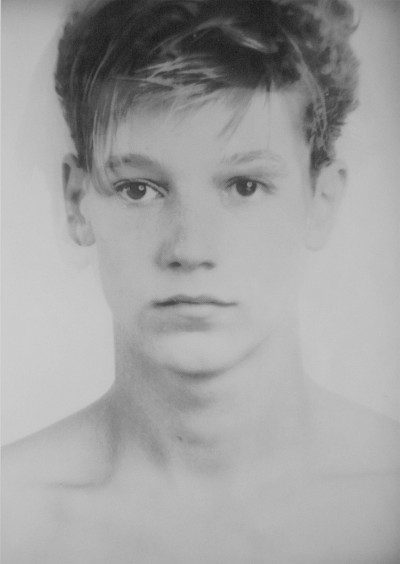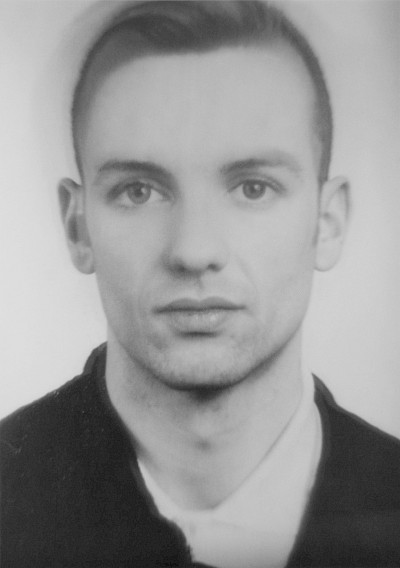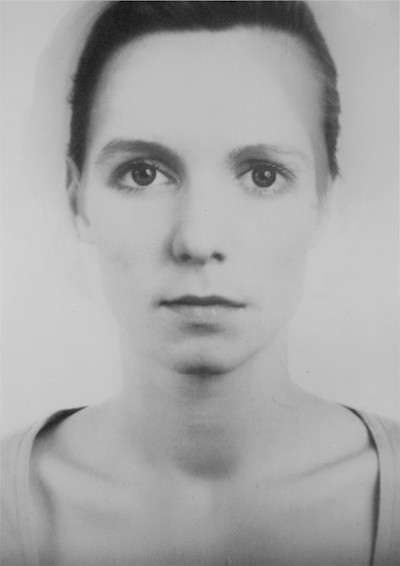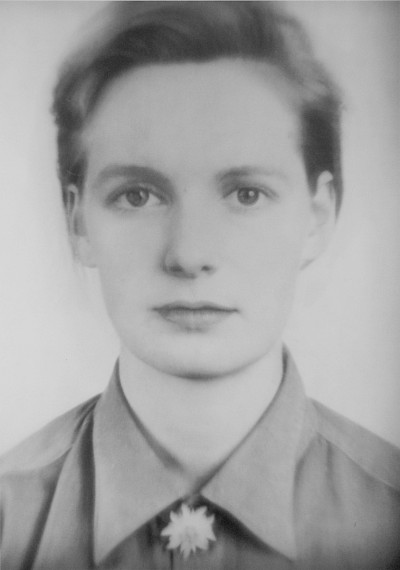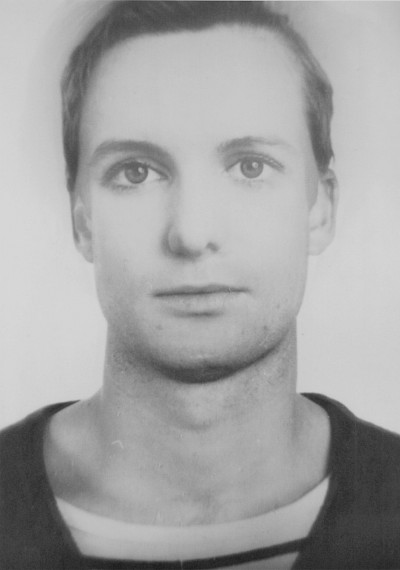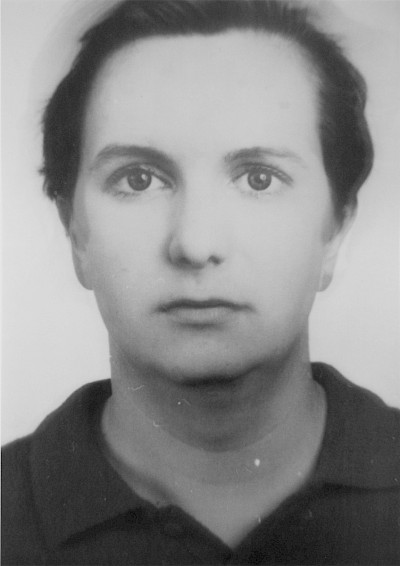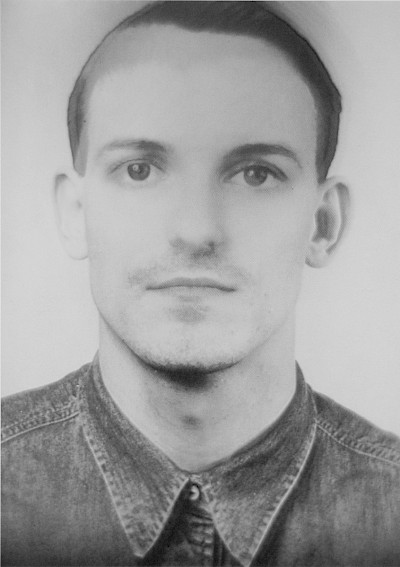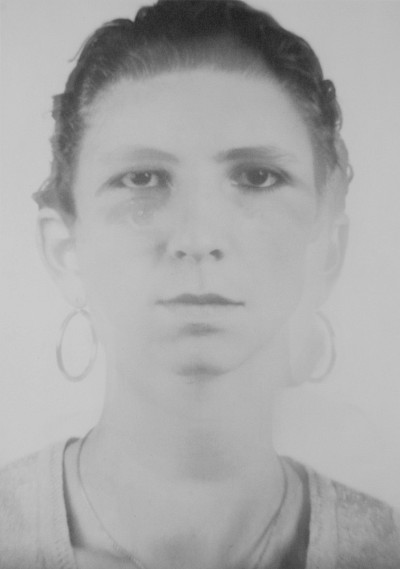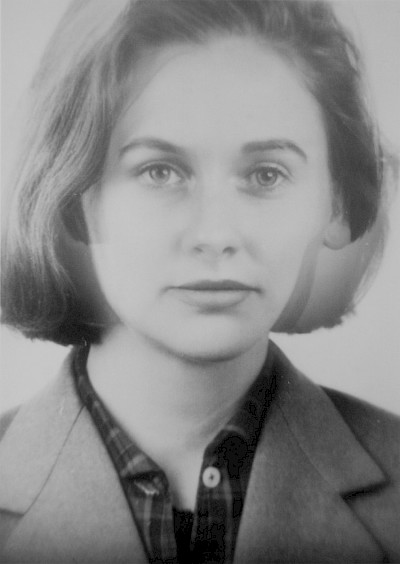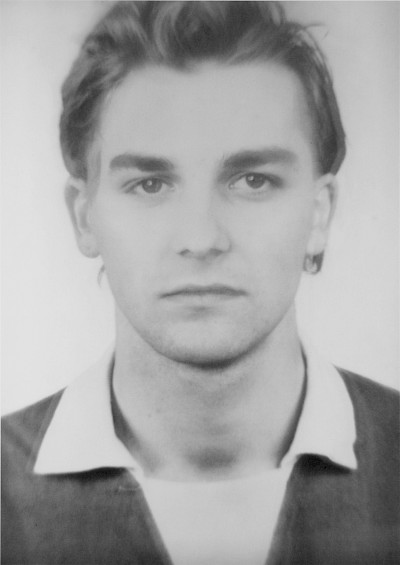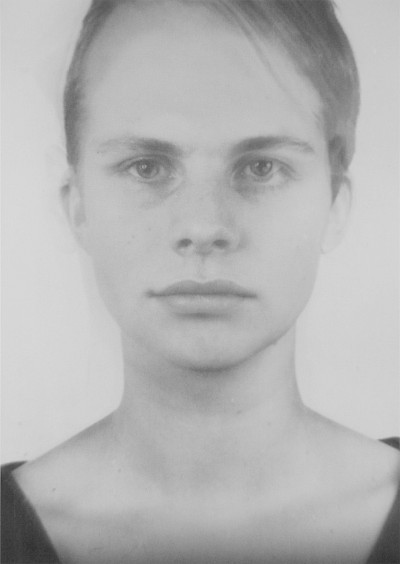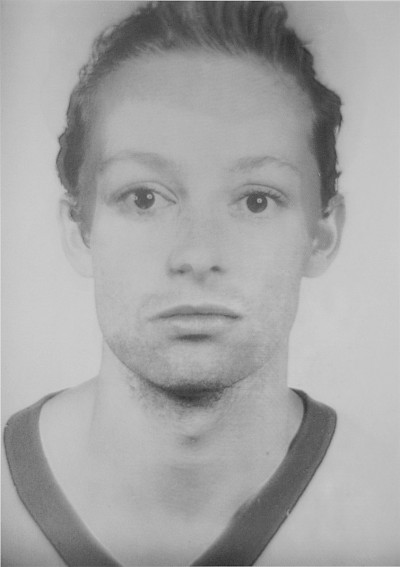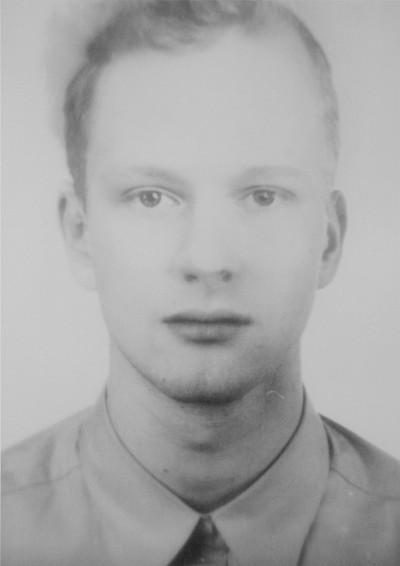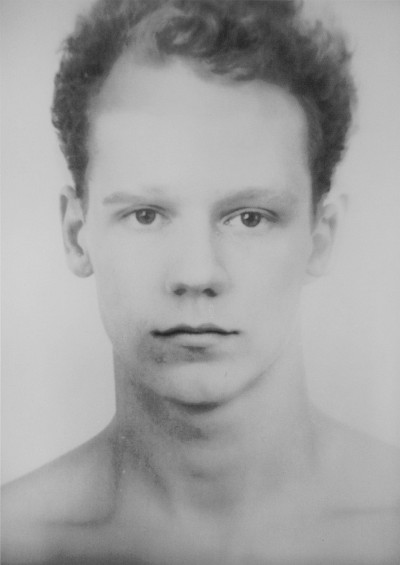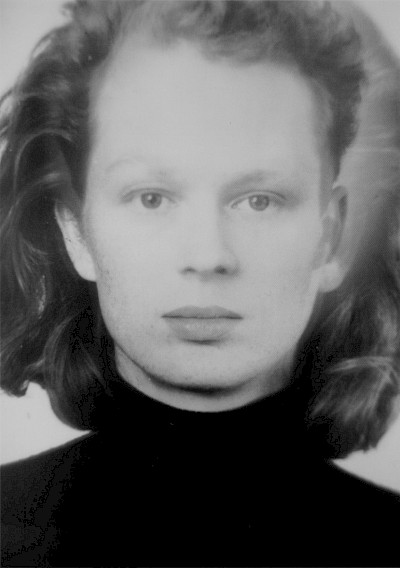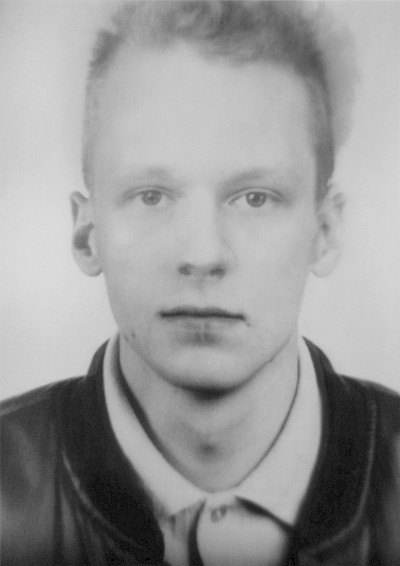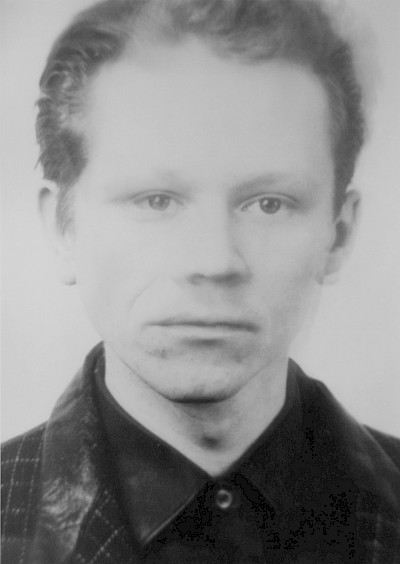Other Portraits
In 1992, while conducting research into the issue of “composite faces,” Ruff came across the so-called Minolta Montage Unit, an image-generating device used by several German State Criminal Police Offices in the 1970s in order to create identikit images. The device uses mirror optics to splice four portrait photos into a single new portrait. While Ruff had hitherto tried to reconstruct faces, he now found it more interesting to construct artificial faces not taken from reality but nevertheless conceivable. He wanted to address this type of image manipulation, which recurs repeatedly throughout the history of photography (be it by double exposure, retouching, various darkroom techniques, or now with digital image processing) without actually using one of the techniques in question. The idea was for the image to arise before the camera and to be recorded in a single shot. Ruff therefore borrowed such a device from the Polizeihistorische Sammlung (Police History Collection) in Berlin and combined two of his own portrait photos in each case to create a new portrait. He then photographed the new image made in this way and used the slide as the basis for a silkscreen.

Other Portraits
In 1992, while conducting research into the issue of “composite faces,” Ruff came across the so-called Minolta Montage Unit, an image-generating device used by several German State Criminal Police Offices in the 1970s in order to create identikit images. The device uses mirror optics to splice four portrait photos into a single new portrait. While Ruff had hitherto tried to reconstruct faces, he now found it more interesting to construct artificial faces not taken from reality but nevertheless conceivable. He wanted to address this type of image manipulation, which recurs repeatedly throughout the history of photography (be it by double exposure, retouching, various darkroom techniques, or now with digital image processing) without actually using one of the techniques in question. The idea was for the image to arise before the camera and to be recorded in a single shot. Ruff therefore borrowed such a device from the Polizeihistorische Sammlung (Police History Collection) in Berlin and combined two of his own portrait photos in each case to create a new portrait. He then photographed the new image made in this way and used the slide as the basis for a silkscreen.






